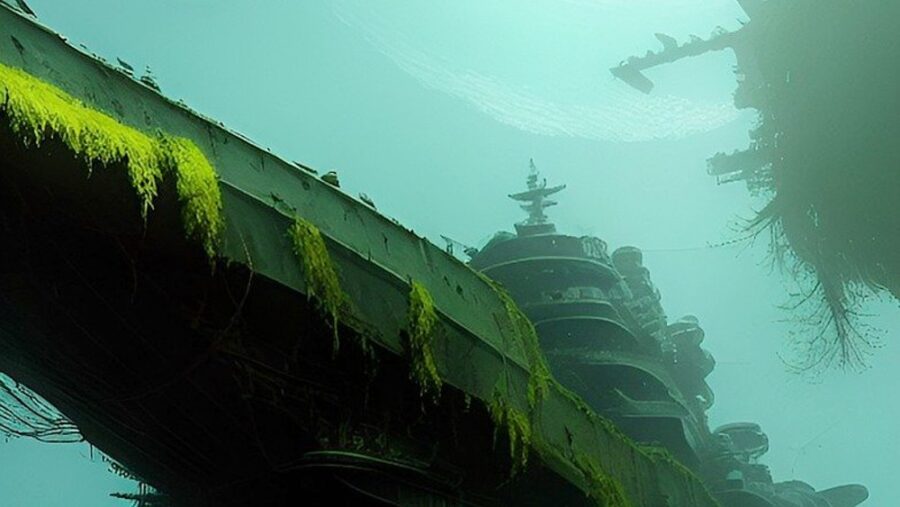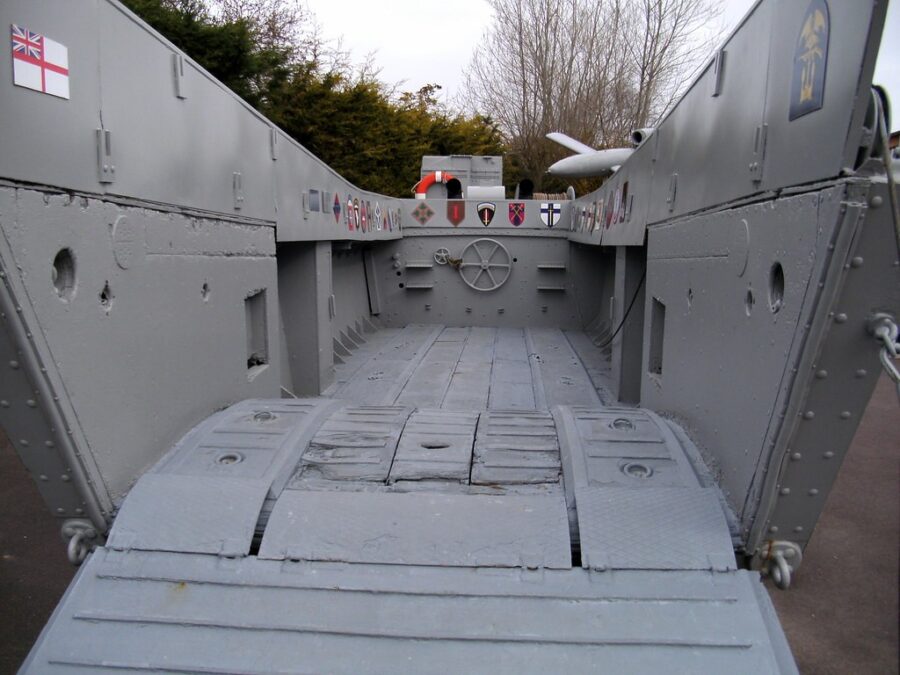Divers Discover Massive World War 2 Shipwreck

A volunteer dive team known as the Gasperados have stumbled upon the answer to a World War II-era mystery. As reported by the scuba enthusiast site Divernet, the team is believed to have discovered the wreckage of a Landing Craft Tank (LCT) approximately 50 miles off the coast of Cornwall, England. The shipwreck is most likely part of an incident that occurred in October of 1944 when harsh winds killed more than 50 members of the British Navy and sunk 6 LCTs.
What is believed to be a sunken World War II era Landing Craft Tank has been discovered 50 miles off the coast of England, over 300 feet beneath the surface.
Ironically, the Gasperados were looking for a different shipwreck when they happened upon the sunken LCT. The team was searching for the vessel Atlantic Diver at a depth of nearly 100 meters—328 feet—when they came across what Divernet calls “a large amphibious assault ship.”
The team quickly got to work photographing the wreckage and eventually got in touch with Harry Bennett, an associate professor of history at Plymouth University, to see if he had any idea what they had found.
It was then that Bennett suggested that the shipwreck might be from a group of LCTs lost to the British Royal Navy when they were being towed from the European Theater to the Far East in preparation for a possible escalation of the fighting going on in World War II’s Pacific Theater.
“The tragic story of the lost convoy of LCTs, which this wreck brings to the fore, is a brutal reminder that in the midst of war our mariners still had to contend with the old foes of unrelenting storms and the cruel sea to sometimes deadly effect.”
Harry Bennett, associate professor of history at Plymouth University
The shipwreck would have been part of the BRN’s 9th LCT Flotilla that was hit by a massive storm en route to the Pacific Theater, resulting in six LCT vessels being sunk somewhere near the Mediterranean Sea.

“The tragic story of the lost convoy of LCTs, which this wreck brings to the fore, is a brutal reminder that in the midst of war our mariners still had to contend with the old foes of unrelenting storms and the cruel sea to sometimes deadly effect,” Bennett told Divernet.
The team believes the shipwreck they discovered was possibly Landing Craft Tank 488, something the official Royal Navy Twitter account agrees with.
Interestingly, the official sinking position of LCT 488 is about 45 miles from where the Gasperados discovered the shipwreck. It’s not uncommon, however, for wind and current to move lightweight vessels like the LCTs around the seafloor.
Steve Mortimer, a member of the Gasperados, stated that as divers, the team never takes for granted that they might “discover the final resting places of sailors who died fighting for our country,” during one of their missions.
In the unlikely event that the submerged vessel isn’t LCT 488, the group still believes that what they found is a World War II LCT of some designation.
That’s because photos taken of the shipwreck show details consistent with other LCTs of that time period. Details like where the vehicle’s prop shaft exits the hull match pictures of the same area on a restored LCT.
Steve Mortimer, a member of the Gasperados, stated that as divers, the team never takes for granted that they might “discover the final resting places of sailors who died fighting for our country,” during one of their missions.
Mortimer went on to say that the team considered it a privilege to be able to suggest that they “may have found the remains of LCT 488 or, if not that ship, then a similar craft from the Second World War” during their attempt to find the Atlantic Diver.
Thanks to the diving team’s efforts, the British Royal Navy is now one step closer to solving a mystery almost 80 years in the making.












